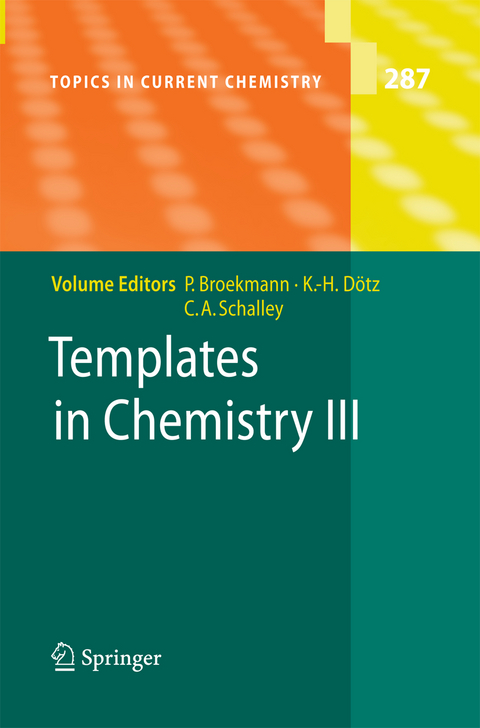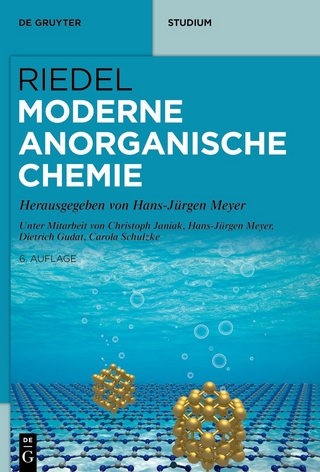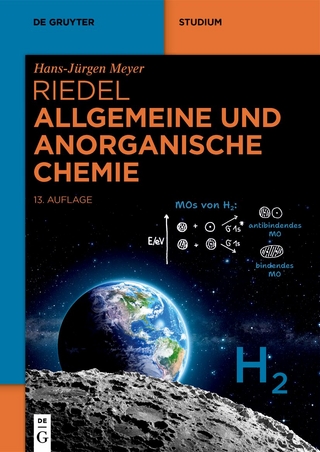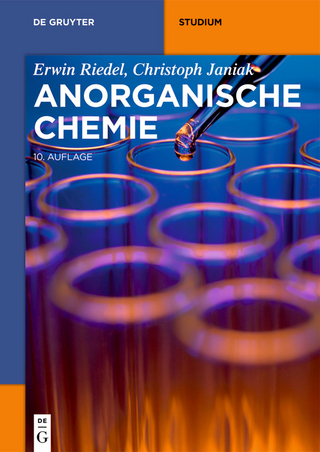
Templates in Chemistry III
Seiten
2014
Springer Berlin (Verlag)
978-3-642-42068-9 (ISBN)
Springer Berlin (Verlag)
978-3-642-42068-9 (ISBN)
The?rsttwovolumesinthis TemplatesinChemistry serieshavefocused on templates that controlsolution-phase reactions. Among the templates d- cussed in these two volumes were convex and concave templates that mediate the formation of (macro)cyclic molecules and mechanically bound molecules withtheir intriguingintertwined topology.Also,three-dimensional templates that are used to imprint polymers and that organize compounds in the solid state for predestined reactions have been included in the earlier volumes. In the present volume, we extend thetemplate topologytosurfaces that act asmatricesforthecontrolledgrowthoftwo-dimensionalarrays.Naturally,the typical methods for the characterization of surfaces such as scanning probe microscopyare prominently represented in this volume. Differentlateralinteractionssuchascoordinativebondsorhydrogenbo- ing play a major role in assembling the 2D networks on surfaces in addition to the interaction of the samples with the underlying substrates. Many p- nomena that are also encountered in solution can be directly visualized on surfaces: Reversible self-assembly processes lead to the formation of large structures through multiple recognition of small building blocks and cul- nate in the engineering of crystals in two dimensions. Self-sorting processes drive the formation of highly ordered arrays through the geometric ?t of the available components. Either the surface itself is the template, for example, when clusters grow on metal oxide ?lms, or colloidal templates control the formationof macroporousnetworksonthe substrate. This volume highlightsa selection of actual complementary aspects of s- facetemplates.Webelievethatthescopeandthevarietyoftopicscoveredinthis volume will attract readers fromdifferent communities such as supramole- larchemistry,materialsciences,surfacechemistry,surfacephysicsandsurface technologyandwehopetheywillenjoythisnewvolumeonTemplatesinCh- istry.
Christoph Schalley has received his PhD under the guidance of Helmut Schwarz and did his postdoctorate with Julius Rebek at the Scripps Research Institute in California. Currently, he is assistant professor in Bonn and has already authored more than 85 publications and four books. He was awarded with the Dozentenstipendium in 2004 of the Fonds der Chemischen Industrie.
Surface-Confined Supramolecular Coordination Chemistry.- Surfaces: Two-Dimensional Templates.- Two-Dimensional Crystal Engineering at the Liquid-Solid Interface.- Porous Networks Through Colloidal Templates.- From Self-Assembly to Charge Transport with Single Molecules - An Electrochemical Approach.
| Erscheint lt. Verlag | 22.10.2014 |
|---|---|
| Reihe/Serie | Topics in Current Chemistry |
| Zusatzinfo | XII, 260 p. |
| Verlagsort | Berlin |
| Sprache | englisch |
| Maße | 155 x 235 mm |
| Gewicht | 421 g |
| Themenwelt | Naturwissenschaften ► Chemie ► Anorganische Chemie |
| Naturwissenschaften ► Chemie ► Organische Chemie | |
| Schlagworte | Cluster Growth • Coordination Chemistry • Inorganic Chemistry • Macroporous Networks • Molecular Networks • Organic Chemistry • Self-Assembly • Templates |
| ISBN-10 | 3-642-42068-0 / 3642420680 |
| ISBN-13 | 978-3-642-42068-9 / 9783642420689 |
| Zustand | Neuware |
| Informationen gemäß Produktsicherheitsverordnung (GPSR) | |
| Haben Sie eine Frage zum Produkt? |
Mehr entdecken
aus dem Bereich
aus dem Bereich


